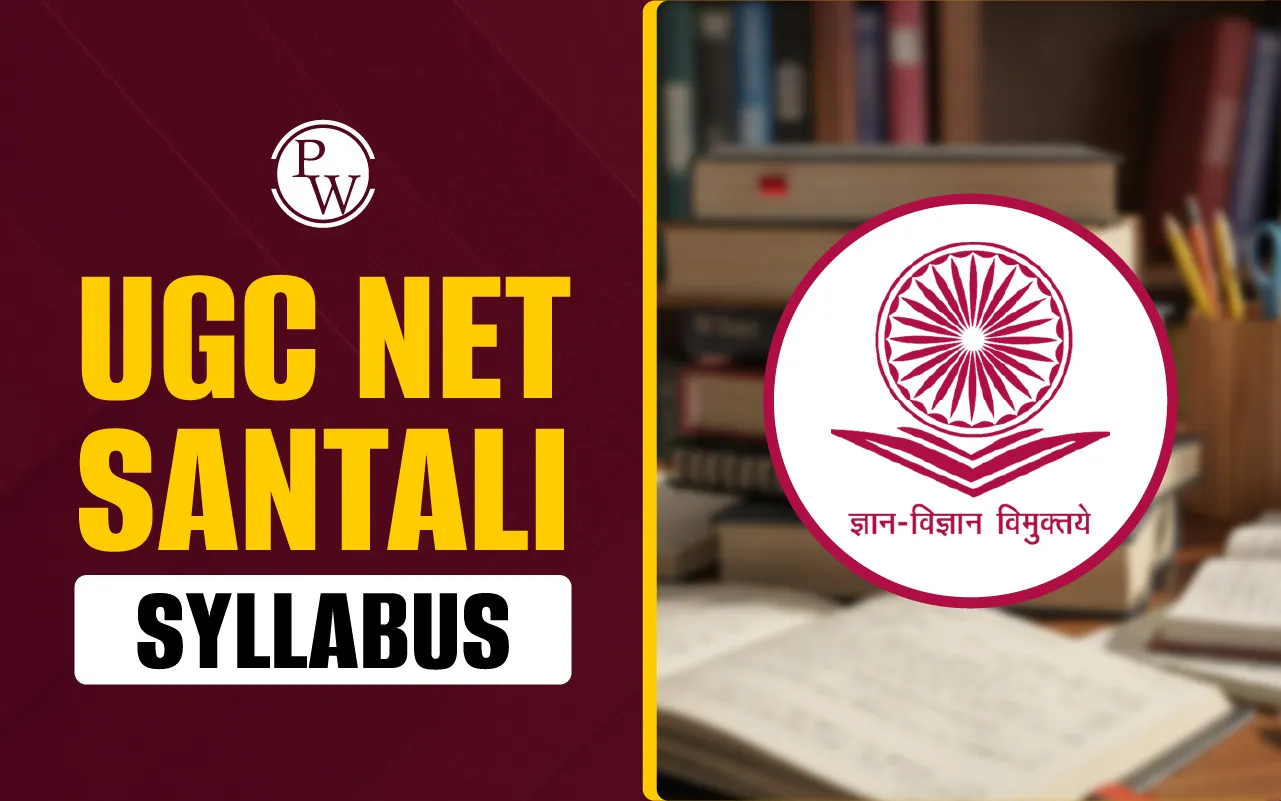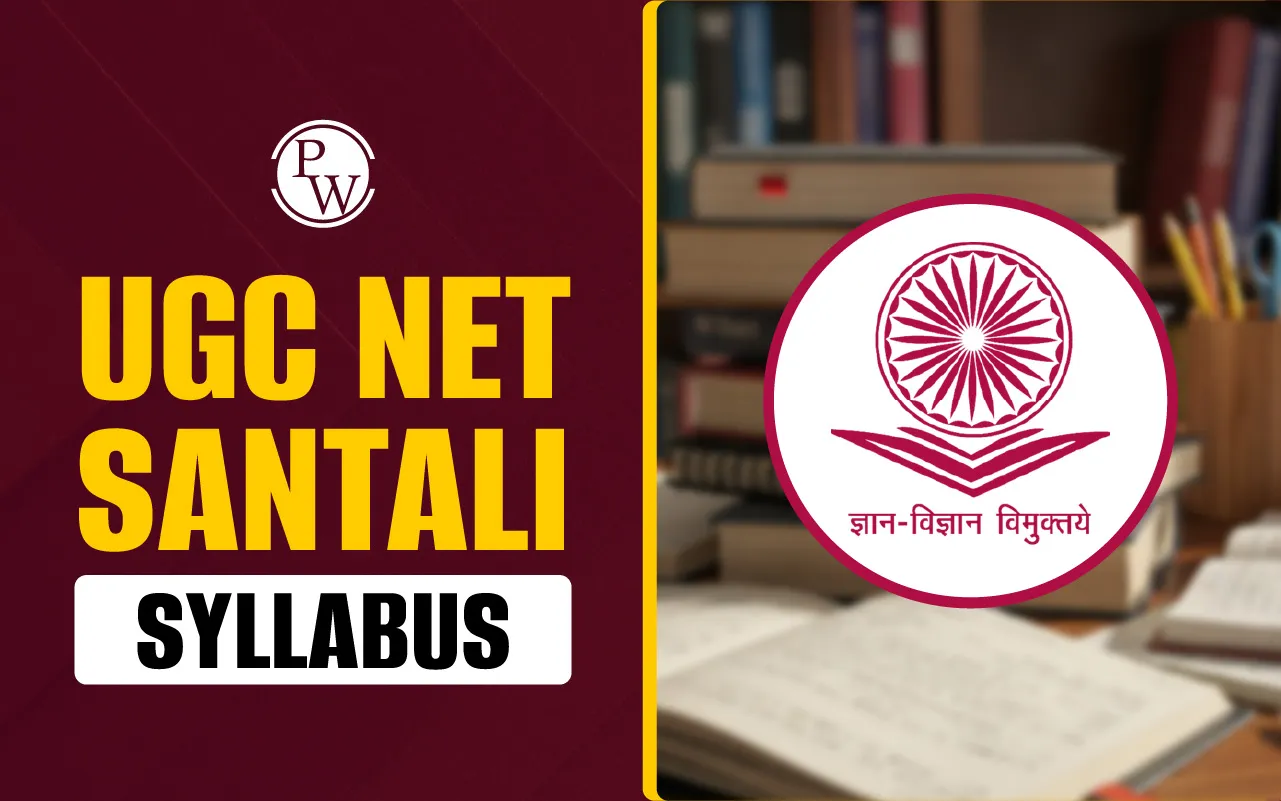

UGC NET Santali Syllabus is published by NTA and meant for aspirants who wish to join the posts of Assistant Professor or attain a Junior Research Fellowship in Santali. It contains Santali language, grammar, literature, and culture-based questions.
There are two papers in this examination: Paper I covers teaching and research skills, while Paper II is designed to test the candidate's knowledge in Santali Language and Literature. The PDF of the UGC NET syllabus can be downloaded by students to prepare a study and revision plan ahead of the examination
UGC NET Santali Syllabus Overview
Candidates should look through the key details of the UGC NET Santali 2025 exam before starting the preparation process. Below is an overview showing at a glance some important information, such as the conducting body, exam dates, duration, total marks, and syllabus coverage, which will help students make an effective study plan.
| UGC NET Santali Syllabus Overview | |
| Particular | Details |
| Exam Name | UGC NET Santali 2025 |
| Exam Conducting Body | National Testing Agency (NTA) on behalf of UGC |
| Exam Mode | Computer-Based Test (CBT) |
| Exam Duration | 3 Hours (Paper I – 1 Hour, Paper II – 2 Hours) |
| Total Questions | 150 (Paper I – 50, Paper II – 100) |
| Total Marks | 300 (Paper I – 100, Paper II – 200) |
| Covered Topics | Teaching & Research Aptitude, Santali Language, Literature, Grammar, Folklore, Translation, and Culture |
| Language | Hindi & English |
| Marking Scheme | +2 marks for each correct answer; No negative marking |
UGC NET Santali Syllabus PDF Download
The candidates will be able to download a consolidated UGC NET Santali Syllabus PDF from the official website of the NTA, either in Hindi or English. This helps in creating structured study plans for UGC NET 2025, while also tracking progress and cross-referencing with previous year papers.
Direct Link to Download UGC NET Santali Syllabus PDF
This syllabus PDF covers all major topics for easy revision and planning.
Unit Wise UGC NET Santali Syllabus
The UGC NET Santali Paper II syllabus consists of 10 main units, covering key areas of Santali language, literature, grammar, and culture. Each unit is essential for subject-specific preparation.
| Unit Wise UGC NET Santali Syllabus | ||
| Unit | Title | Topics Included |
| I | Ethnology | Definition and scope of ethnology, Santali social and cultural systems, traditional beliefs, customs, rituals, festivals, art, and social behavior; important ethnological terms and their relevance. |
| II | Linguistics and Grammar | Origin and development of Santali language; phonetics and phonology; morphology, syntax, semantics; language family, dialects, script, and grammatical structure; word formation, noun, pronoun, verb, tense, and case system. |
| III | Indian Literature | Overview of ancient to modern Indian literature; Sanskrit, Hindi, and regional literary traditions; comparative study of Santali and Indian literature; major writers and literary trends. |
| IV | Theory of Literature | Concepts, types, and forms of literature; literary criticism-Indian and Western; theories like Rasa, Dhvani, Structuralism, Feminism, Marxism, etc.; figures of speech, metre, and poetics. |
| V | Folk Literature | Nature and forms of Santali folk literature-songs, tales, proverbs, riddles, and folklore; folk drama, myths, and oral traditions; Santali folk culture and performance forms. |
| VI | Santali Poetry Literature | Development of Santali poetry-ancient, medieval, and modern; themes and styles; major poets such as Ragunath Murmu, Jadumani Besra, Pandit Raghunath Hembram, and others. |
| VII | Santali Prose Literature | Santali prose forms-essays, short stories, novels, and dramas; major prose writers like Nandlal Murmu, Shibu Marandi, and Jadumani Besra; themes of modern Santali prose. |
| VIII | Santali Magazines | Development of Santali periodicals and magazines; notable publications like Horhoponre, Ol Chiki Murgi, Santal Pargana Times; their contribution to language and culture. |
| IX | Tribal Thinkers and Literature | Important tribal authors and their works-Raghunath Murmu, Pandit Raghunath Hembram, Dr. Krishna Murmu, Dr. B.P. Oraon, Dr. Tudu; major tribal themes and representation in literature. |
| X | History of the Santals | History and origin of the Santals; social organization, economic system, religion, art, and culture; movements, festivals, traditional beliefs, and socio-cultural evolution. |
UGC NET Santali Exam Pattern
The UGC NET Santali exam consists of two papers. The papers are taken without any breaks in between, and both are to be completed within 3 hours.
| UGC NET Santali Exam Pattern | ||||
| Paper | Subject | Number of Questions | Marks | Duration |
| Paper I | Teaching/Research Aptitude | 50 | 100 | 1 hour |
| Paper II | Santali (subject-specific) | 100 | 200 | 2 hours |
UGC NET Santali Marking Scheme
The marking scheme of the UGC NET Santali Exam, 2025, conducted by the National Testing Agency (NTA), is simple and fair. The test has two papers.
-
Paper I assesses the candidate's general teaching and research aptitude.
-
Paper II is designed to test your knowledge of the Santali language and literature.
Both papers are held together in one session, and the same marking rules apply to all subjects.
| UGC NET Santali Marking Scheme | |
| Component | Details |
| Total Questions | 150 |
| Total Marks | 300 |
| Marks per Question | 2 marks for each correct answer |
| Negative Marking | No negative marking |
| Type of Questions | Multiple Choice Questions (MCQs) |
| Marking Rule | +2 marks for every correct answer, and 0 marks for wrong or unanswered questions |
Preparation Tips to Cover UGC NET Santali Syllabus
Smart preparation for the UGC NET Santali exam begins with smart planning and consistent practice based on a clear understanding of the syllabus and pattern of the examination.
-
Start from the official NTA PDF in order to avoid outdated or incomplete topics.
-
Prepare concise notes on Santali grammar, literary criticism, and folklore studies.
-
Practice previous year question papers to identify recurring patterns and focus areas.
-
Update the structure of linguistics and translation theories constantly.
-
Join peer discussions or online Santali forums to clarify some complex literary or grammatical notions.
-
Schedule time every week to Paper I aptitude areas-reasoning, comprehension, and research ethics.
